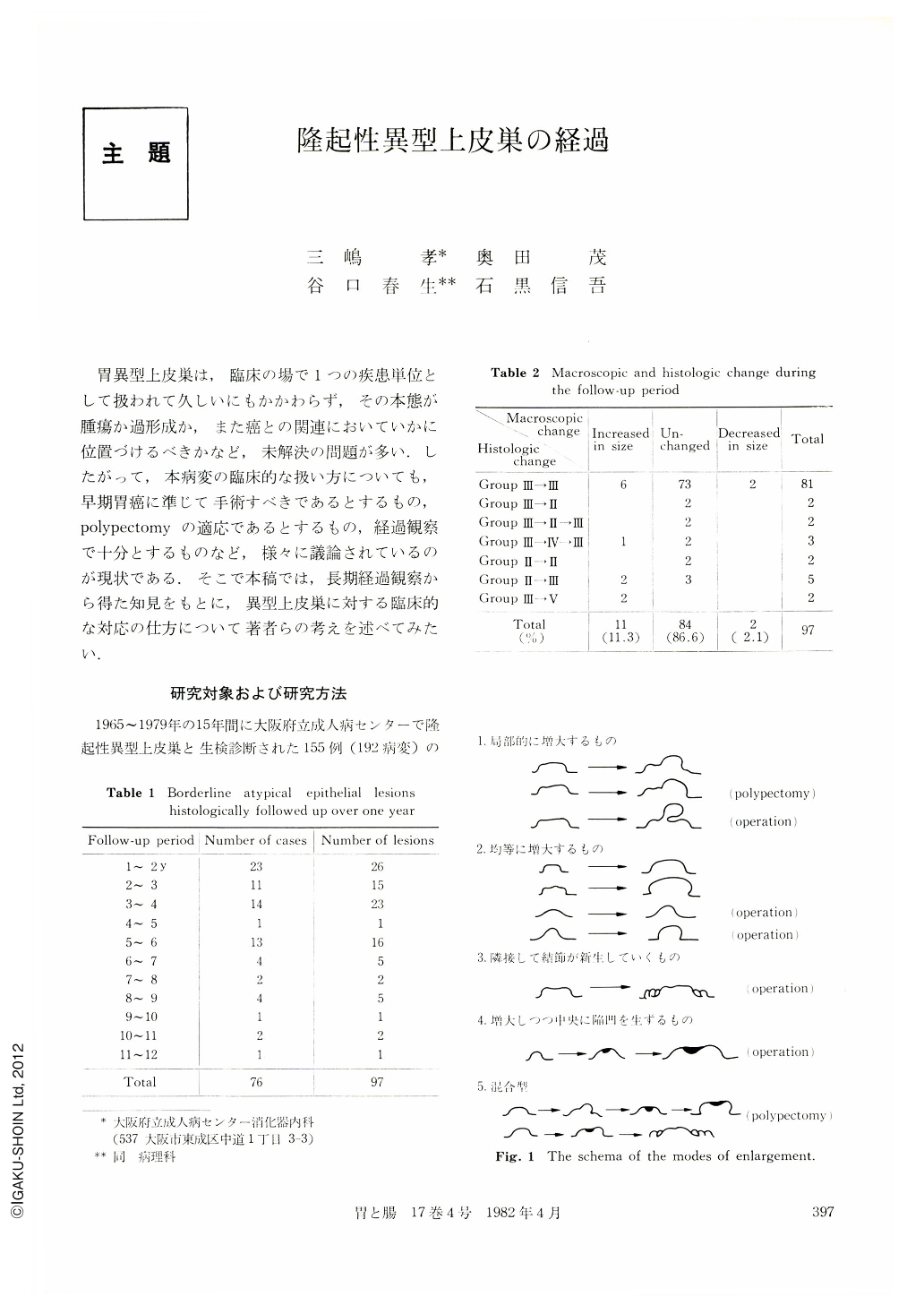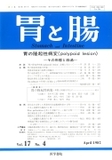Japanese
English
- 有料閲覧
- Abstract 文献概要
- 1ページ目 Look Inside
- サイト内被引用 Cited by
胃異型上皮巣は,臨床の場で1つの疾患単位として扱われて久しいにもかかわらず,その本態が腫瘍か過形成か,また癌との関連においていかに位置づけるべきかなど,未解決の問題が多い.したがって,本病変の臨床的な扱い方についても,早期胃癌に準じて手術すべきであるとするもの,polypectomyの適応であるとするもの,経過観察で十分とするものなど,様々に議論されているのが現状である.そこで本稿では,長期経過観察から得た知見をもとに,異型上皮巣に対する臨床的な対応の仕方について著者らの考えを述べてみたい.
Studying 97 lesions of atypical epithelial change by endoscopic follow-up with serial biopsy for more than one year (maximum 11 years and 7 months, average 3 years and 11 months), we analized and discussed their macroscopic and histological features in due course of time.
As shown in Table 1, macroscopic growth of the lesion was noted in 11 cases but regressed lesion was found in two cases and the remaining 84 cases showed no change. It also showed histological progression of the atypism in two cases which was finally diagnosed as Group V by biopsy and all of them showed macroscopic growth as well.
Furthermore, analysing the way of growth of enlarged 11 lesions, we could classify their pattern into the following five patterns (Fig. 2). Namely, 1) Partial growth of the lesion.
2) Diffuse growth of the whole lesion.
3) Nodular formation besides the atypical lesion.
4) Growing lesion with central depression.
5) Mixed pattern.
The above growing pattern is completely different from one of hyperplastic polyp or early protruded gastric carcinoma, and it is specific for the atypical epithelial lesion.
Among the above 11 lesions, 5 of them were operated on, 2 were polypectomized and the rest 4 have been followed endoscopically and only 2 of them showed progression of the atypism.
Although macroscopic growth is not the absolute indicator for malignant change, it suggests that the growing lesion tends to become malignancy. Therefore, special attention should be paid for their follow-up.

Copyright © 1982, Igaku-Shoin Ltd. All rights reserved.


